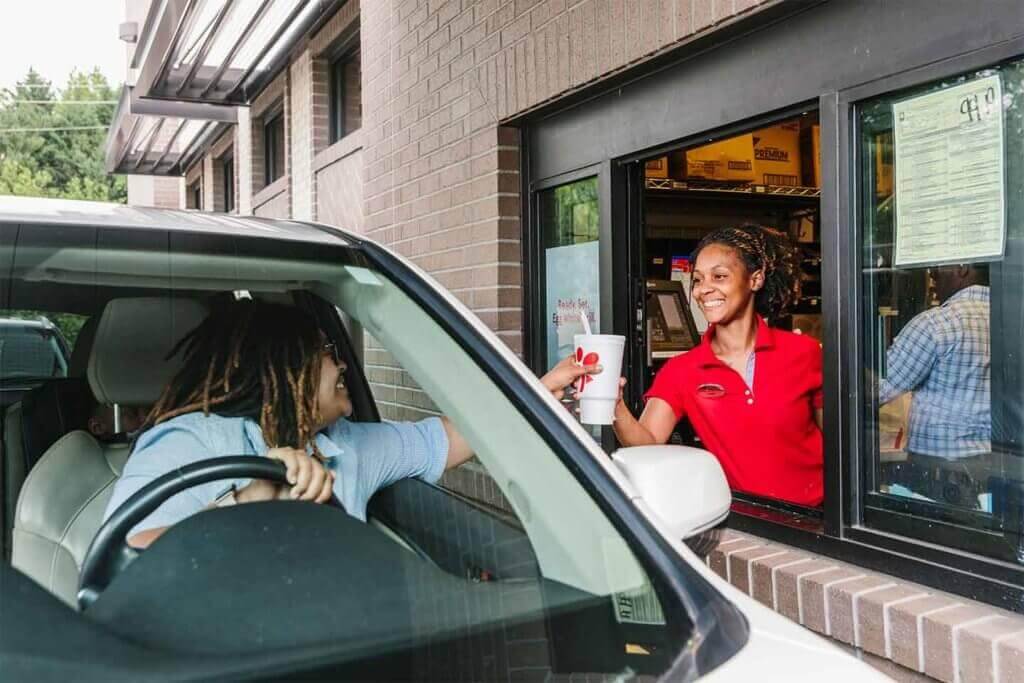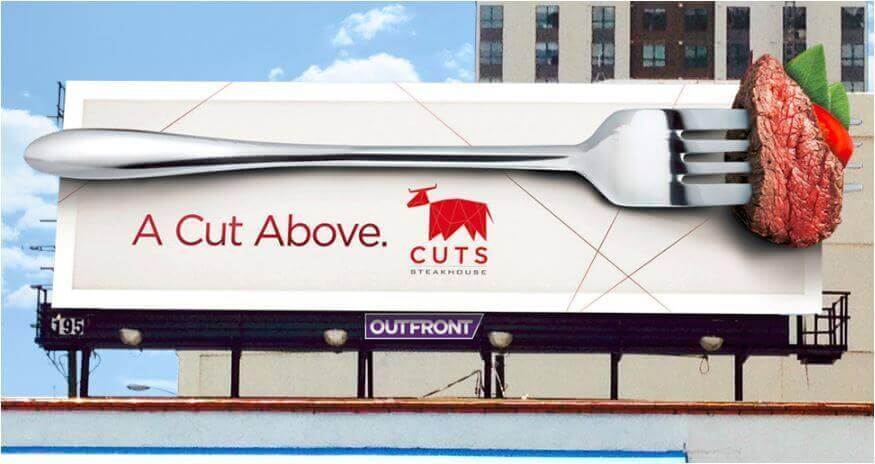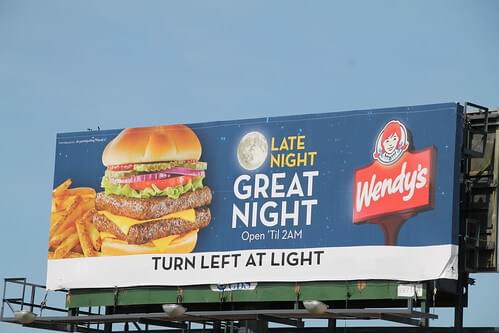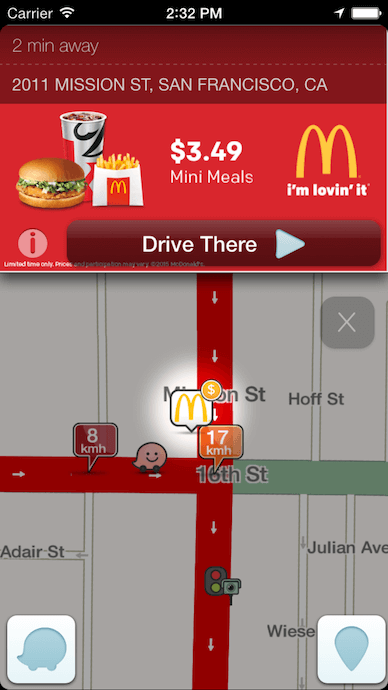
We’ve all been there – it’s late in the evening and you just got off a long day of work, and the last thing you want to do is cook up a storm in the kitchen. You’ve decided that tonight is take-out night and you haven’t stopped thinking about that juicy McD’s Angus beef burger ever since you saw an ad for it on the highway yesterday. The good news? This one burger won’t ruin your diet. The not-so-great-for-your-wallet news? You’ve just succumbed to one of the oldest, yet most effective forms of advertising known as out-of-home (OOH) or outdoor advertising. Whether you’re a franchise owner, a marketing specialist for a local chain, or a single-unit owner, look no further than OOH to woo hungry consumers like yourself.
Why OOH Works for Restaurants
Every week, 80% of US consumers notice some form of outdoor advertising – from truck-side ads to billboards, bus shelter signs to subway posters. When it comes to leveraging the mass market of OOH, restaurants of all types and sizes are no stranger. In just 2019 alone, restaurants across the country collectively spent $547 billion on OOH ads – earning them the 6th highest spot in OOH spending by industry category. And these marketing dollars aren’t going to waste.
According to the Outdoor Advertising Association of America (OAAA) and Nielsen’s 2019 OOH Advertising Study, 25% of American consumers were reported to have visited a restaurant right after seeing an OOH advertisement. This is likely due to the fact that, as much as OOH keeps food at the top of the minds of commuters, they’re always thinking about food anyway! In the same study, 1 in 3 of those surveyed said that they had “what they were going to eat later that day” on their mind when they’re out and about. What’s more? 74% said that they think about family and 43% said that they think about friends when commuting. When it comes to family and friends, what’s a better way to gather and celebrate special occasions or just to catch-up than with a delicious meal?

How to Position OOH to Reach Restaurant Goers
Get Creative with OOH
Advertising your restaurant with OOH is a big deal. Nowadays, any company can display any online or social media ad they want with the click of a few buttons. However, not every company or restaurant can easily launch an outdoor ad campaign. So, it’s extremely important that you match the larger-than-life ad medium that is OOH with an even bigger and bolder message.

Of course, start by designing your OOH campaign with the aim of meeting your marketing goals – whether you’re trying to promote a new location you’ve just opened, a new menu item, or a limited-time meal special offer. In general, OOH ads should be clear, concise, and captivating. Remember that everyone is in a rush to get somewhere when they’re commuting and it is up to you to capture their attention in mere milliseconds. Also, keep in mind that your ads should appeal to the biggest influencers for families who decide to dine out – children! Even if the parents don’t t have fast food as their ideal dinner for the night, a couple of whining kids are sure to change their minds!
Give Directions
Giving directions to your restaurant can be a simple, yet easily overlooked detail to include in your OOH advertisement. Especially if your restaurant is in a hidden or difficult-to-find place, directional ads will ensure that you won’t miss potential sales from eager hungry customers. Take a campaign Wendy’s did, for example. The popular quick service restaurant chain saw a 32% increase in sales within the first week of the billboard being posted at one of its new locations – all thanks to the directions that were given on the ad.

Leverage Multiple OOH Formats
While most of us immediately think of large billboards in Times Square when we think of outdoor advertising, OOH actually – as the name suggests – encompasses any form of advertising consumers encounter when they’re outside their homes. This includes – but is not limited to – posters, public transit, signs atop taxis, bus benches, phone kiosks, wall murals, and cinema ads. So, if you’re concerned that your restaurant may not have the grand marketing budget of nationwide chains to do billboard advertising, don’t fret! When working with the right OOH advertising agency to design, plan, and execute your marketing goals, you can launch an effective campaign that maximizes every dollar of your budget and creates the highest ROI for your restaurant. The added benefit of not going with traditional static billboards is that you can hyper-target your audience with eye-level ads. For example, bus shelter ads or smaller signage won’t be missed by someone passing by.
Invest in Programmatic Digital OOH
Hailed over and over again as one of the biggest trends of OOH to look out for in 2020 and beyond, programmatic digital OOH (DOOH) refers to the automated buying, selling, and delivery of OOH ads on digital billboards and signage. This innovative technology allows advertisers to automatically purchase ads based on certain conditions – for example, time of day, if a certain demographic is within close radius of the ad, weather conditions, and etc. In simple terms, programmatic allows you to get the right message across to the right audience and at the right time. So, if it’s a rainy day, you can choose to display your soup options that are sure to make the mouths water of commuters passing by. Likewise, you can change up your ad to display breakfast options during morning rush hours, lunch options during the afternoon, or kid meals when the ad can detect families nearby. By providing highly relevant and contextual messaging, your ad is exponentially more likely to entice and engage with the right people.

Add OOH to the Media Mix
OOH is powerful alone, but it’s even more effective when combined with other types of advertising. Adding OOH billboard advertising to an ad campaign on average increases the reach of TV by 18%, radio by 45%, mobile by 316%, and social media by 212%.
In 2018, McDonald’s launched a dual-channel campaign that integrated mobile retargeting. Equipped with geo-fencing technology (a location-based marketing tool), the 300 billboards that McDonald’s launched in Southern California detected drivers and pedestrians close-by who had the navigation app, Waze, downloaded on their smartphones. The next time that the Waze user would open their app, they would receive a pop-up directional ad to their nearest McDonalds’ restaurant. Over the course of 8 weeks, the brand earned 6.4 million mobile impressions, reached 1.9 million unique visitors, and navigated over 8,400 customers to their restaurants. It’s safe to say that this optimized campaign was a huge success for the fast food giant and gave them a leg-up against their competitors.

What are you waiting for?
It’s clear that OOH is a great way for your restaurant to stay top of mind, reach hungry customers, and boost the effectiveness of existing marketing campaigns. People often make quick, last-minute decisions about where they’re going to eat later that day, and it would be a colossal mistake for your restaurant to not capitalize on that opportunity. And OOH ensures you do just that.


